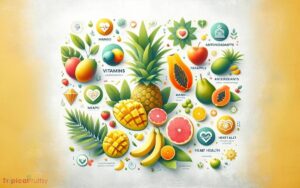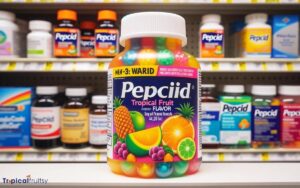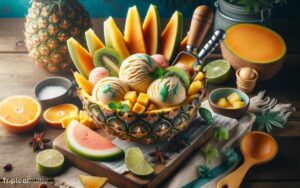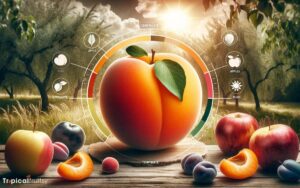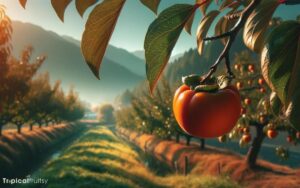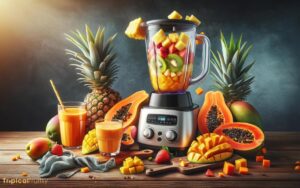Tropical Fruit Looks Like Banana: Explained!
In the diverse world of tropical fruits, several varieties bear a striking resemblance to the common banana, each with unique characteristics that distinguish them from their more familiar counterpart.
The plantain, a staple in many tropical regions, is thicker and firmer than the banana and is typically cooked before consumption.
Enset, known as the false banana, is integral to the diet in parts of Ethiopia, valued for its edible starchy pseudostem rather than its fruit.
The burro banana, with its chunky shape and lemony flavor, provides a distinct culinary experience. The red banana, notable for its colorful peel and creamy flesh, offers a sweeter taste.
Lastly, the Goldfinger variety, a hybrid developed for its disease resistance, presents a flavor that is both sweet and tangy.
Understanding these fruits expands our appreciation for the diversity and richness of tropical produce.
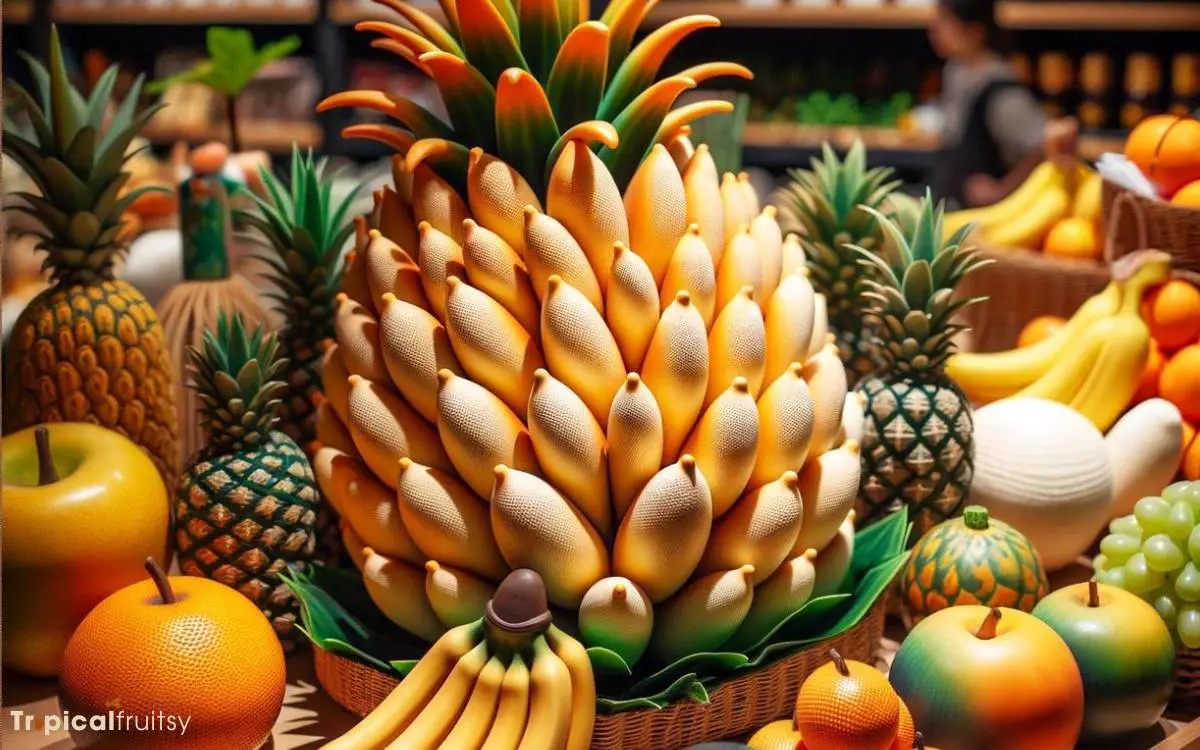
Key Takeaway
Unveiling the Plantain Mystery

Commonly mistaken for its sweeter counterpart, the banana, plantains are a staple starch in many tropical regions and are frequently used in cooking for their versatile nature.
Belonging to the genus Musa, plantains are botanically classified as Musa paradisiaca, a name reflecting their significance in traditional diets.
Unlike bananas, which are often consumed raw, plantains possess a higher starch content and lower sugar levels, necessitating thermal processing to enhance palatability.
This characteristic allows for a diverse culinary application, ranging from fried, boiled, to baked dishes.
The biochemical composition of plantains varies with ripeness, transforming from predominantly starchy polysaccharides to simpler sugars as they mature, thus altering their textural properties and suitability for different recipes.
Understanding these nuances is crucial for culinary exploitation and nutritional optimization.
Enset: The False Banana
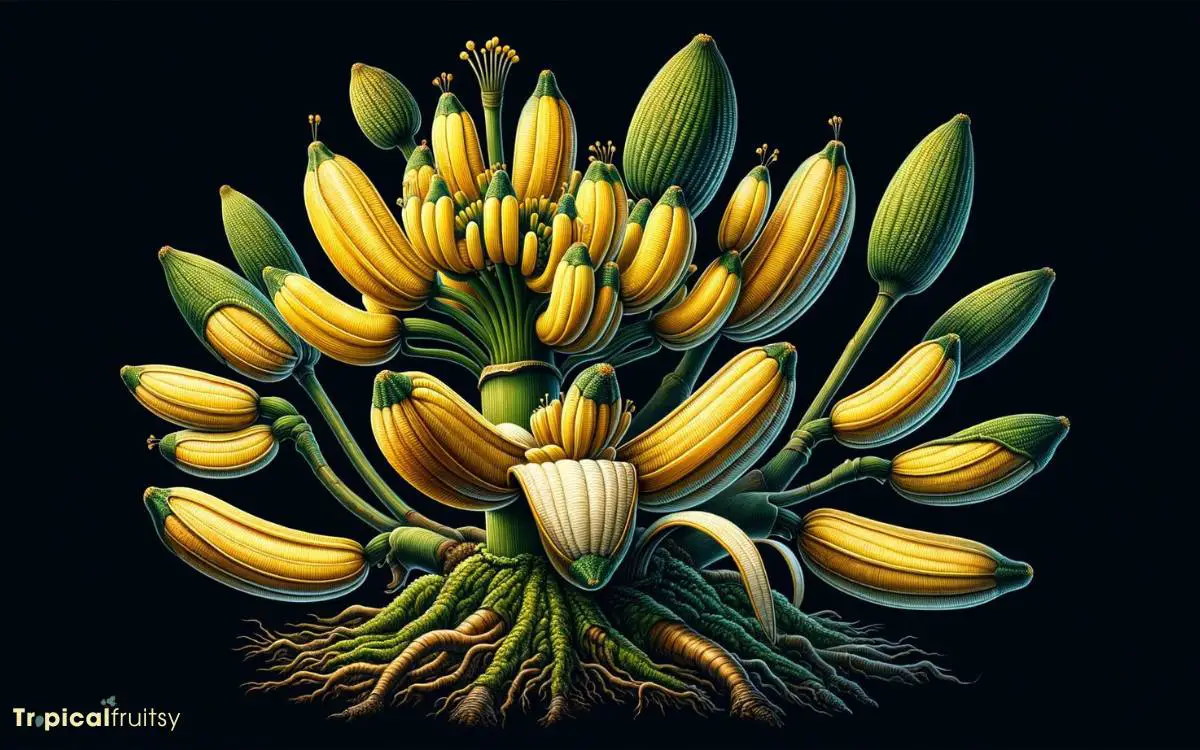
Enset, often referred to as the false banana, is an Ethiopian staple crop that resembles the banana plant but bears inedible fruit.
Unlike its cousin, the yield of Enset is not in its fruit but in its pseudostem and corm, which provide a starchy food source essential to the diet of local populations.
The cultivation and utilization of Enset is a fine-tuned process, steeped in tradition and agricultural knowledge.
| Aspect | Enset | Banana |
|---|---|---|
| Edible Parts | Pseudostem and corm | Fruit |
| Fruit | Inedible | Edible |
| Origin | Ethiopia | Southeast Asia |
| Nutritional Value | High in carbohydrates | High in carbohydrates, vitamins |
Scientific inquiry into Enset has revealed a complex carbohydrate profile, which includes resistant starch, conducive to gut health.
This, alongside its resilience to climatic stressors, marks Enset out as a crop of interest in the face of global food security challenges.
Burro Banana’s Unique Charm
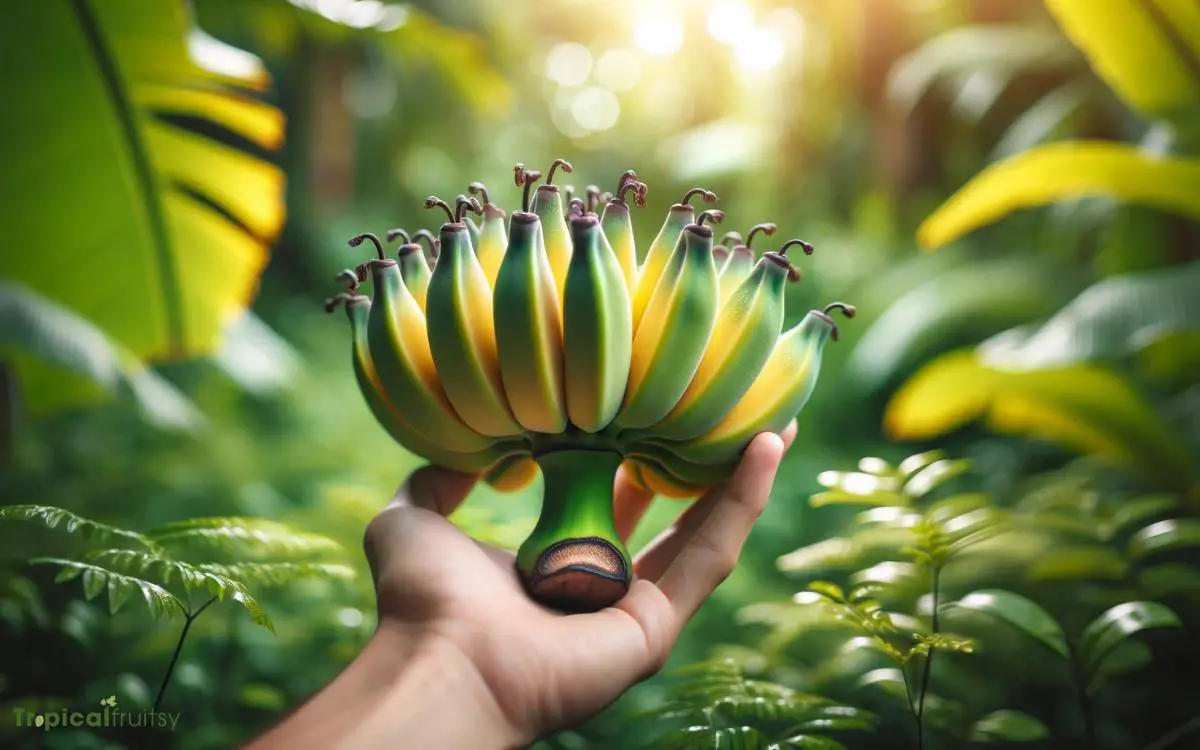
Amidst the diversity of banana-like fruits, the Burro Banana stands out for its distinctive shape and flavor profile.
This particular cultivar, scientifically known as Musa acuminata x Musa balbisiana (ABB Group), possesses characteristics that are both intriguing and desirable:
- Shape: Chunkier and more squared than the common Cavendish, resembling a boxy silhouette.
- Size: Generally shorter and thicker, making it distinct in physical appearance.
- Texture: The flesh is creamy yet firm, with a higher resistance to over-ripening.
- Taste: A unique sweet and tangy flavor, hinting at lemon or apple undertones.
These attributes contribute to the Burro Banana’s niche appeal, differentiating it from other bananas and enriching the tapestry of tropical fruits.
The Distinctive Red Banana
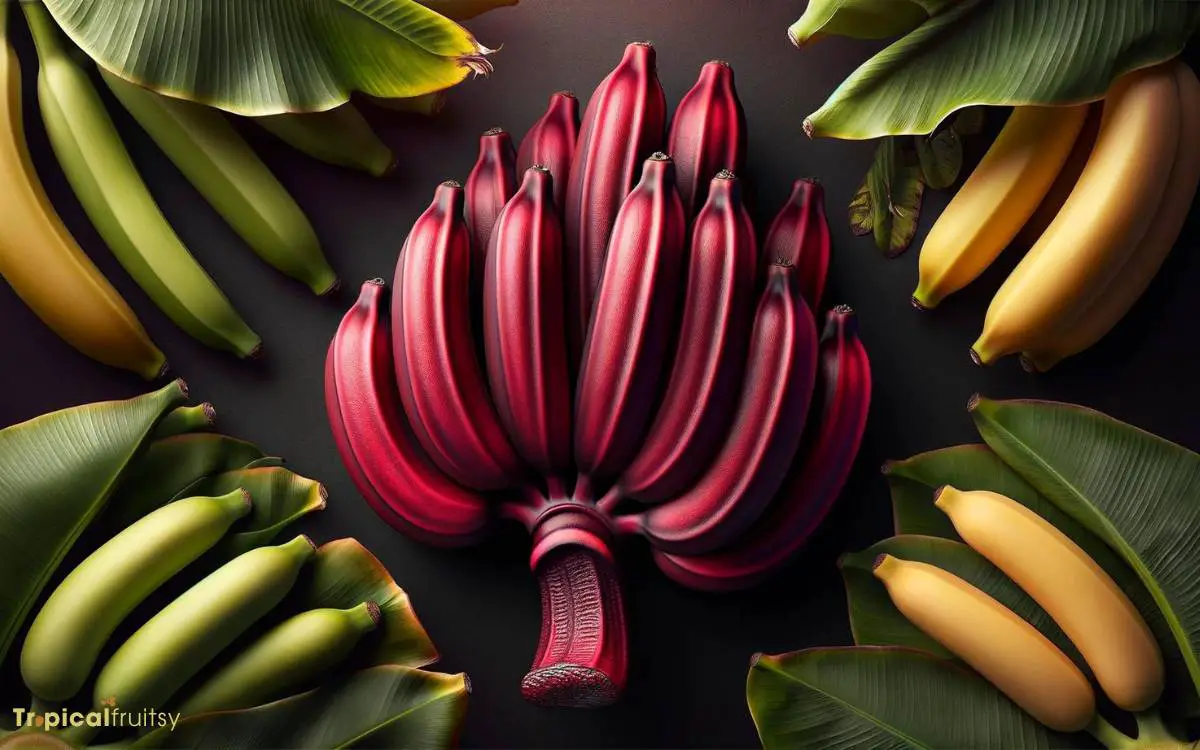
Branching out from the more familiar yellow varieties, the red banana offers a unique visual and taste experience with its vibrant ruddy skin and creamy sweet flesh.
This cultivar, Musa acuminata, var. ‘Red Dacca’, is smaller and plumper than the ubiquitous Cavendish banana, with a distinctive raspberry-like flavor that hints at its complex genetic heritage.
The red banana is rich in beta-carotene and vitamin C, providing not only a sensory delight but also a nutritious boost.
| Nutrient | Value |
|---|---|
| Vitamin C | High |
| Beta-carotene | Very High |
| Potassium | Comparable to Yellow Bananas |
The red banana’s pigmentation is due to the presence of anthocyanins, which are powerful antioxidants, possibly offering health benefits beyond basic nutrition.
As we delve deeper into the spectrum of banana varieties, the exploration leads us to uncover the characteristics of another intriguing cultivar—the Goldfinger variety.
What Other Fruits Are Similar in Appearance to Bananas in Tropical Regions?
In tropical regions, other fruits that resemble bananas in appearance include plantains, which are larger and starchier, and finger bananas, which are smaller and sweeter. When exploring tropical fruits, it’s important to sample a variety beyond just bananas, such as those found in a Dole tropical fruit cup.
Discovering the Goldfinger Variety
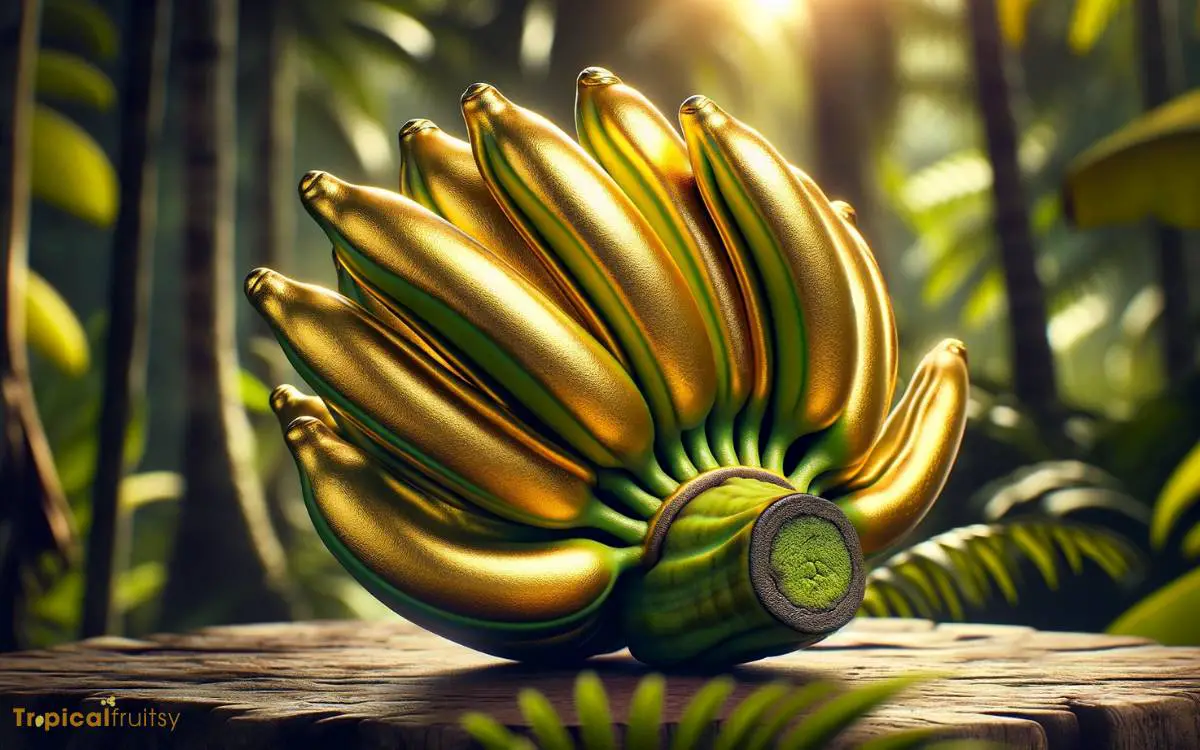
The Goldfinger banana, a hybrid of the Brazilian ‘Prata’ and the ‘SH-3142’, emerges as a hardy variety with a sweet, apple-like taste and resistance to disease.
This cultivar, scientifically known as ‘FHIA-01’, was developed by the Honduran Foundation for Agricultural Research to address issues plaguing other banana varieties, such as susceptibility to Panama disease and Black Sigatoka.
Consider the following key attributes of the Goldfinger banana:
- Disease Resistance: Exhibits significant resistance to major banana diseases, reducing reliance on chemical treatments.
- Climatic Adaptability: Thrives in a wider range of environmental conditions compared to traditional cultivars.
- Flavor Profile: Offers a unique, dessert-quality flavor that distinguishes it from conventional bananas.
- Post-Harvest Longevity: Demonstrates an extended shelf life, enhancing its commercial viability.
The scientific community continues to monitor the performance and agricultural implications of the Goldfinger variety in diverse ecosystems.
Conclusion
The diversity of banana-like fruits underscores nature’s penchant for variation, often cloaked in familiar forms. The plantain masquerades as a staple, while Enset feigns its cousin’s identity for sustenance.
The burro banana and the red banana, each with their distinctive allure, mock the common expectations of taste and texture.
Lastly, the Goldfinger variety stands as a testament to the irony of evolution, offering a glimpse into the boundless iterations of the seemingly mundane.

